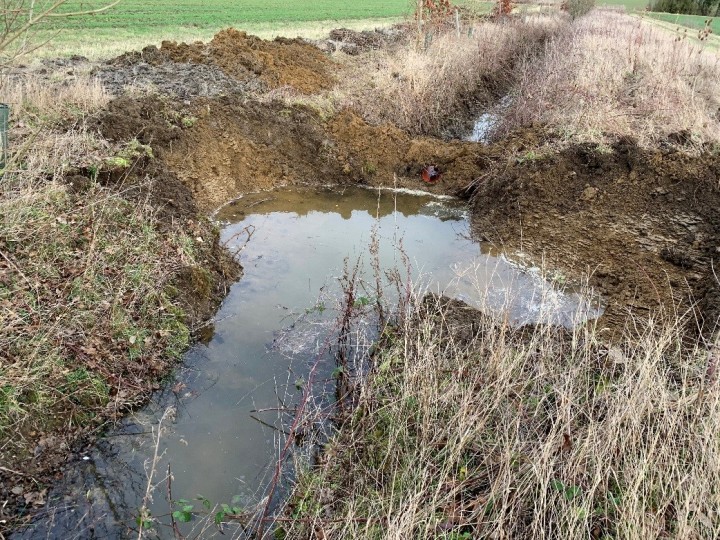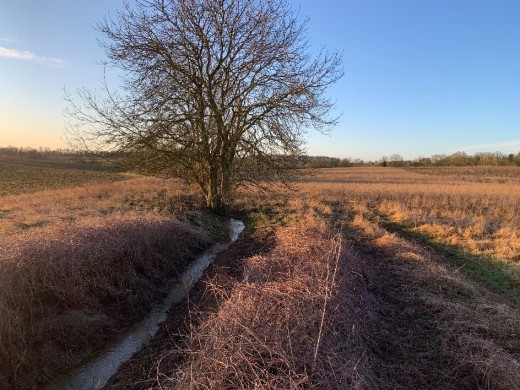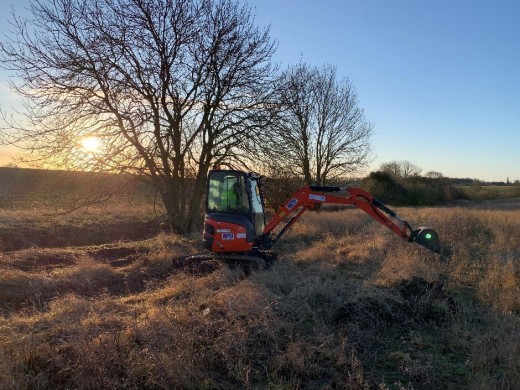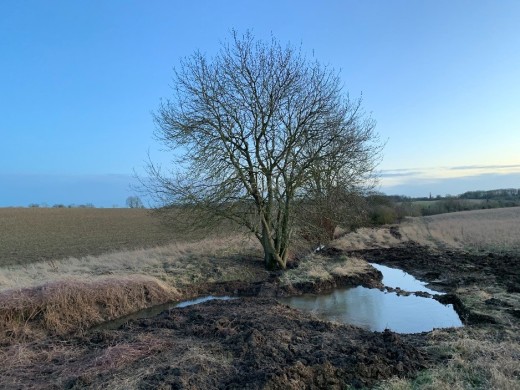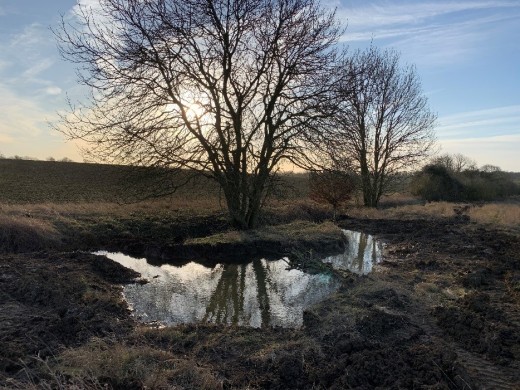Ditches are important. Many were originally dug over 100 years ago in locations where they were really needed. Improved drainage was historically a rather unsung feature of agricultural improvement to help increase the productivity and reliability of food production. Apart from designed landscape schemes, there was no recreational ditching when you had to dig them by hand! They provide many functions to the farming system, especially when combined with an in-field drainage system:
They remove excess field water, encouraging deeper rooting and extending the growing season, allowing fields to maintain productivity, keeping soil in the field and helping reduce compaction
They take water away from farms, and other locations where it isn’t wanted, to watercourse. As such, they have a role in reducing flooding of farmland but speed up the flow to water courses
They provide a valuable, often overlooked habitat for aquatic, invertebrate, mammalian and bird species.
So how do we promote water voles, dragonflies and snipe, without risking field productivity or flooding upstream?
This short blog will describe a few simple measures that can be adopted by farmers, without significant investments in time or cost, to promote ditches as habitats without sacrificing their core function.
Patchwork approach
As with most habitat management, a patchwork approach is better than a large sweep in one area. If you are planning to do some ditching, consider breaking blocks into smaller areas. Perhaps only do one side of each field or ditch or per year. Ditching on a rotation that is spread across the farm will provide a variety of habitats, as well as the ability for species to move to nearby habitats if ditching is required.
Half a ditch, halve the time
A job that is done more regularly than digging ditches is the removal of vegetation growing on the side of a ditch with a flail or hedge cutter. This can become a regular routine at a quiet time of year and with no agreed specification or control. The vegetation at the side of a ditch has several functions. It is a valuable habitat but also works as a buffer strip to prevent the leaching of chemicals into the watercourse. Good vegetation cover on the walls of the ditch helps maintain its integrity, preventing soil from eroding into the ditch bottom, reducing the need to dig the ditch out and maintaining the drainage function.
To maintain a healthy, manageable amount of vegetation, consider only flailing one side of the ditch each year in rotation, such as, in the image below.
Cutting each bank on rotation helps maintain habitats for a variety of species, as well as allowing vegetation to maintain the integrity of the ditch wall and drainage functions.
A ditch or a pond?
Ditches were designed and dug to efficiently transfer excess water from the field to the watercourse with minimal maintenance. We can maintain this drainage function, but greatly improve the wildlife value and slow down water by simple ideas when digging ditches out. Consider:
Adding some deeper sections which will stay wet when the rest of the ditch has dried up, acting like a temporary pond
Building up spoil to create some shallower sections which will help wading birds
Creating ‘shelves’ or shallow slopes in the ditch profile to accommodate a wider variety of species
In the image below, we have built up some ditch spoil in this particularly deep, but relatively dry ditch. This has raised the water level but is still below outfalls of the field drainage outfalls, providing a valuable habitat for aquatic species. A section of a large bore drainage pipe has been used to maintain the flow of the ditch. Skilled digger work has also created a number of shelves just above and below the water level. Remember to remove or spread spoil from the edges of field margins as soon as practically possible.



